Container fig growing technique: Ever dreamt of plucking sweet, juicy figs straight from your own backyard, even if you don’t have a sprawling orchard? I know I have! For centuries, figs have been cherished, not just for their delectable taste, but also for their rich symbolism of peace and prosperity, dating back to ancient civilizations. Imagine recreating that historical abundance right on your patio!
But let’s face it, not everyone has the ideal climate or space for traditional fig cultivation. That’s where the magic of container gardening comes in. This DIY guide is your passport to successfully growing figs in containers, regardless of your location or gardening experience. We’ll unlock the secrets to choosing the right pot, selecting the perfect soil, and mastering the art of watering and fertilizing to ensure your fig tree thrives.
Why is this so important? Because fresh, homegrown figs are simply unmatched in flavor compared to store-bought varieties. Plus, mastering the container fig growing technique allows you to control the growing environment, protecting your precious tree from harsh weather and pests. Get ready to embark on a rewarding journey that will bring the taste of the Mediterranean to your doorstep!
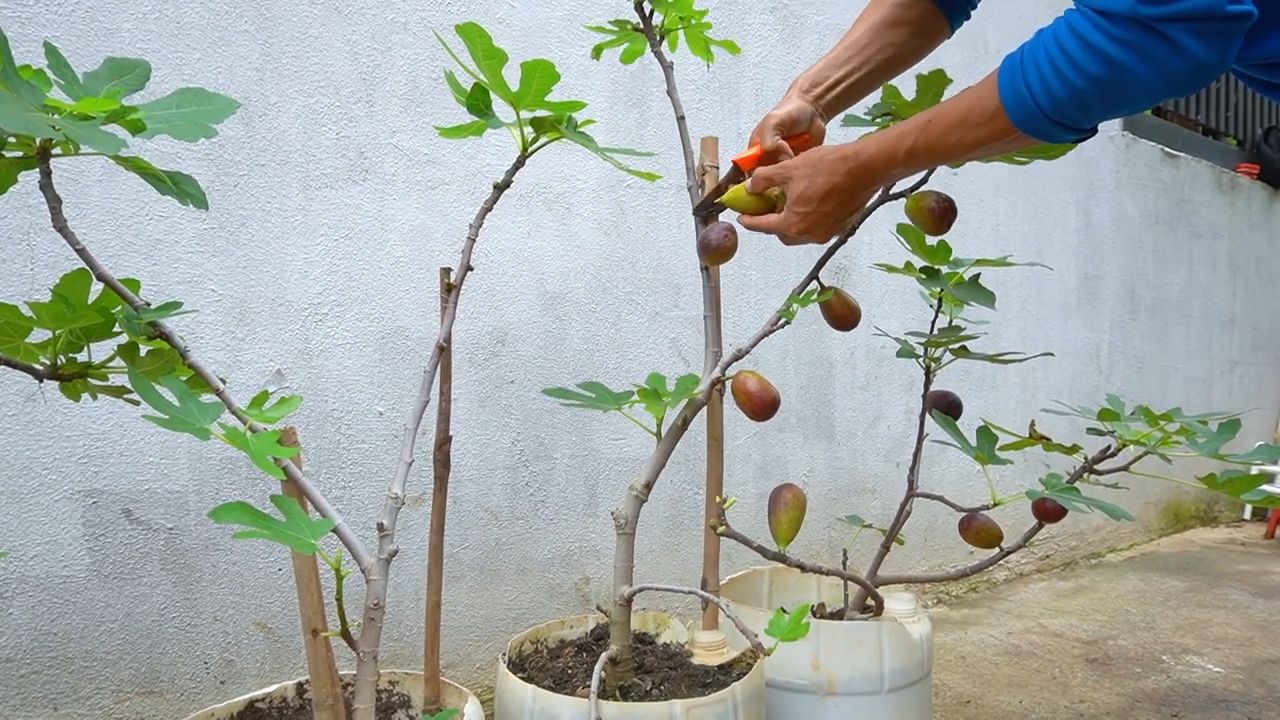
Growing Figs in Containers: A Comprehensive DIY Guide
Hey there, fellow fig enthusiasts! I’m so excited to share my tried-and-true method for growing delicious, juicy figs right in containers. Whether you have a small balcony, a patio, or just want the flexibility of moving your fig tree around, container gardening is the perfect solution. I’ve been doing this for years, and trust me, the rewards are well worth the effort. Let’s dive in!
Choosing the Right Fig Variety
Before we even think about soil or pots, let’s talk about fig varieties. Not all figs are created equal, especially when it comes to container growing. You’ll want to choose a variety that’s known for its compact size, early fruiting, and ability to thrive in a confined space. Here are a few of my personal favorites:
* Brown Turkey: This is a classic for a reason! It’s reliable, produces sweet, flavorful figs, and is relatively cold-hardy.
* Celeste: Another excellent choice, Celeste figs are known for their small size and delicious, jam-like flavor. They’re also quite cold-hardy.
* Chicago Hardy: As the name suggests, this variety is incredibly resilient and can withstand colder temperatures than most other figs.
* Little Miss Figgy: This is a dwarf variety, perfect for smaller spaces. It produces abundant crops of sweet figs.
* Black Mission: If you’re looking for a rich, dark fig with a complex flavor, Black Mission is a great option.
Gathering Your Supplies
Okay, now that we’ve picked our fig variety, let’s get our hands on the necessary supplies. Here’s what you’ll need:
* A large container: This is crucial! Choose a pot that’s at least 20-24 inches in diameter and depth. The bigger, the better, as it will give your fig tree plenty of room to grow. Make sure it has drainage holes!
* High-quality potting mix: Don’t skimp on this! Use a well-draining potting mix specifically formulated for containers. Avoid using garden soil, as it can become compacted and doesn’t drain well. I like to use a mix of peat moss, perlite, and vermiculite.
* Fig tree: Obviously! You can purchase a young fig tree from a local nursery or online.
* Slow-release fertilizer: This will provide your fig tree with a steady supply of nutrients throughout the growing season.
* Watering can or hose: For, you know, watering.
* Pruning shears: For keeping your fig tree in shape.
* Mulch: To help retain moisture and suppress weeds.
* Optional: A dolly or plant stand with wheels, especially if you’re using a large container. This will make it easier to move your fig tree around.
Planting Your Fig Tree
Alright, let’s get our hands dirty! Here’s how to plant your fig tree in its new container home:
1. Prepare the container: Make sure your container is clean and has adequate drainage holes. If the drainage holes are large, you might want to cover them with a piece of landscape fabric to prevent the potting mix from washing out.
2. Add potting mix: Fill the container about one-third full with your potting mix.
3. Remove the fig tree from its nursery pot: Gently loosen the roots of the fig tree by teasing them apart with your fingers. This will encourage them to grow outward into the new potting mix.
4. Position the fig tree: Place the fig tree in the center of the container, making sure the top of the root ball is level with the top of the potting mix.
5. Fill the container with potting mix: Add more potting mix around the root ball, gently firming it down as you go. Leave about an inch or two of space between the top of the potting mix and the rim of the container.
6. Water thoroughly: Water the fig tree deeply until water drains out of the drainage holes. This will help settle the potting mix and ensure the roots are well-hydrated.
7. Add mulch: Apply a layer of mulch around the base of the fig tree, keeping it a few inches away from the trunk. This will help retain moisture, suppress weeds, and regulate soil temperature.
Caring for Your Container Fig Tree
Now that your fig tree is planted, it’s time to learn how to care for it. Here’s what you need to know:
* Watering: Water your fig tree regularly, especially during hot, dry weather. The frequency of watering will depend on the size of the container, the weather conditions, and the type of potting mix you’re using. As a general rule, water when the top inch of soil feels dry to the touch. Avoid overwatering, as this can lead to root rot.
* Fertilizing: Feed your fig tree with a slow-release fertilizer in the spring. You can also supplement with a liquid fertilizer every few weeks during the growing season. Choose a fertilizer that’s specifically formulated for fruit trees.
* Sunlight: Fig trees need plenty of sunlight to thrive. Aim for at least 6-8 hours of direct sunlight per day. If you live in a hot climate, you might want to provide some afternoon shade to prevent the leaves from scorching.
* Pruning: Prune your fig tree in late winter or early spring, before new growth begins. Remove any dead, damaged, or crossing branches. You can also prune to shape the tree and encourage fruit production. Fig trees produce fruit on new growth, so don’t be afraid to prune!
* Overwintering: If you live in a cold climate, you’ll need to protect your fig tree from freezing temperatures. There are several ways to do this:
* Move the container indoors: This is the easiest option if you have a garage, shed, or basement that stays above freezing.
* Wrap the container: Wrap the container with burlap or bubble wrap to insulate the roots.
* Heel the container in the ground: Dig a hole in the ground and bury the container up to its rim. This will provide extra insulation for the roots.
* Protect the branches: Wrap the branches with burlap or frost cloth to protect them from frost and wind.
Dealing with Pests and Diseases
Like all plants, fig trees can be susceptible to pests and diseases. Here are a few common problems to watch out for:
* Fig rust: This fungal disease causes reddish-brown spots on the leaves. To prevent fig rust, provide good air circulation and avoid overhead watering. If you see signs of fig rust, treat the tree with a fungicide.
* Spider mites: These tiny pests can suck the sap from the leaves, causing them to turn yellow and stippled. To control spider mites, spray the tree with insecticidal soap or neem oil.
* Scale: These small, armored insects can attach themselves to the branches and leaves, sucking the sap from the tree. To control scale, scrape them off with a fingernail or treat the tree with horticultural oil.
* Birds: Birds love figs just as much as we do! To protect your figs from birds, you can cover the tree with netting.
Harvesting Your Figs
The moment we’ve all been waiting for! Harvesting your figs is the most rewarding part of growing them. Here’s how to know when your figs are ripe:
* The fig will soften: Ripe figs will be soft to the touch and will yield slightly when gently squeezed.
* The fig will droop: Ripe figs will often droop downward on the branch.
* The fig will change color: The color of the fig will depend on the variety, but ripe figs will typically be darker and more vibrant in color.
* A drop of nectar will appear: A small drop of nectar may appear at the eye (the small opening at the bottom of the fig) when it’s ripe.
To harvest your figs, gently twist them off the branch. Be careful not to damage the fruit. Enjoy your fresh figs right away, or store them in the refrigerator for a few days.
Troubleshooting Tips
Sometimes, even with the best care, things can go wrong. Here are a few troubleshooting tips to help you diagnose and solve common problems:
* Leaves turning yellow: This could be a sign of overwatering, underwatering, nutrient deficiency, or pest infestation. Check the soil moisture, fertilize the tree, and inspect for pests.
* Fruit dropping prematurely: This could be caused by stress, such as extreme heat, drought, or nutrient deficiency. Make sure the tree is getting enough water and fertilizer.
* No fruit production: This could be due to lack of sunlight, improper pruning, or a young tree that hasn’t reached maturity yet. Make sure the tree is getting enough sunlight, prune it correctly, and be patient!
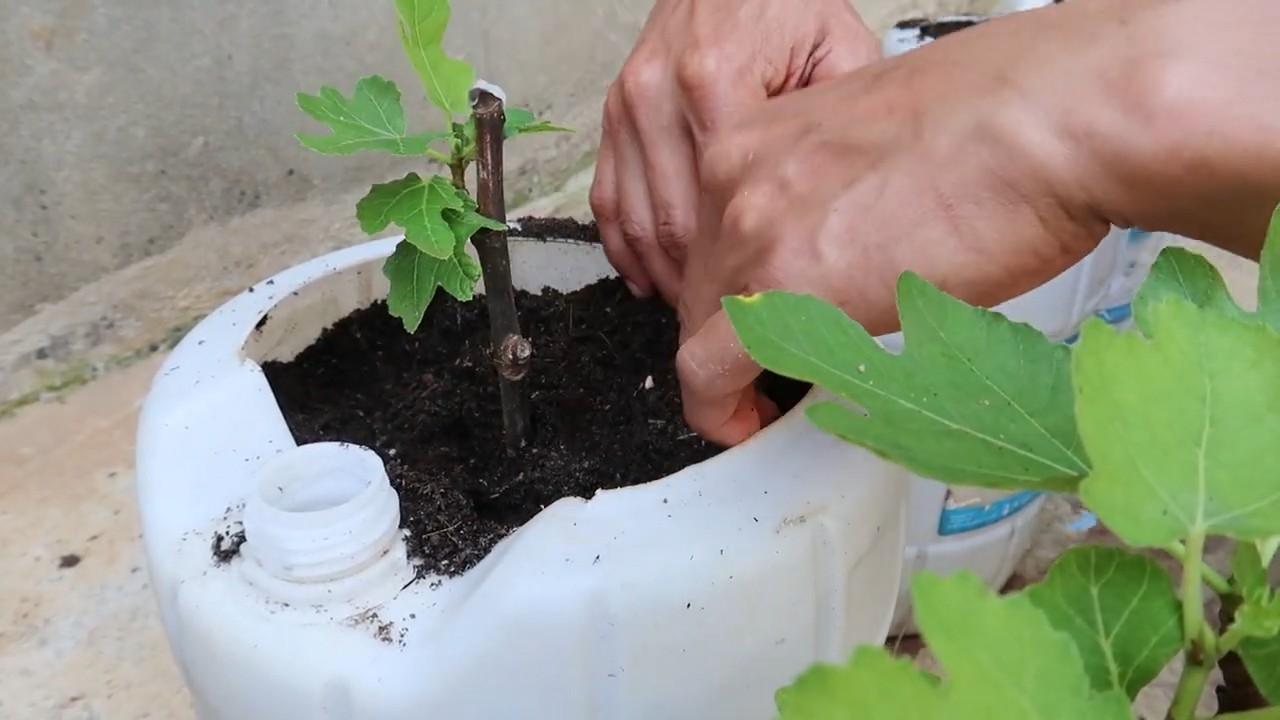
Conclusion
So, there you have it! Mastering the art of container fig growing is not only achievable but also incredibly rewarding. We’ve explored a simple yet effective DIY trick that can significantly boost your fig tree’s health and productivity, even in limited spaces. This isn’t just about growing figs; it’s about creating a thriving ecosystem in a pot, a miniature orchard on your patio or balcony.
Why is this DIY trick a must-try? Because it addresses the core needs of fig trees in containers: improved drainage, enhanced nutrient availability, and optimal root aeration. By implementing this technique, you’re essentially mimicking the ideal growing conditions figs enjoy in their natural environment. You’ll witness healthier foliage, stronger branches, and, most importantly, a more abundant harvest of those delicious, sun-ripened figs. Forget struggling with stunted growth or disappointing yields. This method empowers you to take control and cultivate a flourishing fig tree, regardless of your gardening experience.
But the beauty of container gardening lies in its adaptability. Feel free to experiment with variations to suit your specific needs and preferences. For instance, if you live in a particularly hot climate, consider adding a layer of reflective mulch to the top of the container to keep the soil cool and prevent excessive moisture loss. Alternatively, if you’re using a smaller container, you might want to increase the frequency of watering and fertilization.
Another exciting variation is to incorporate companion plants into your fig tree’s container. Herbs like basil, thyme, and oregano can help deter pests and attract beneficial insects, creating a more balanced and resilient ecosystem. Plus, you’ll have a readily available supply of fresh herbs for your culinary creations!
Don’t be afraid to get creative with your container selection, too. While terracotta pots are a classic choice, you can also use repurposed containers like old wine barrels or galvanized tubs. Just make sure the container is large enough to accommodate the fig tree’s root system and has adequate drainage holes.
Ultimately, the key to successful container fig growing is observation and adaptation. Pay close attention to your fig tree’s needs and adjust your care routine accordingly. Are the leaves wilting? It might need more water. Are the leaves turning yellow? It could be a sign of nutrient deficiency. By becoming attuned to your fig tree’s signals, you’ll be able to provide it with the optimal conditions for growth and fruit production.
We wholeheartedly encourage you to try this DIY trick for container fig growing. It’s a simple, cost-effective way to unlock the full potential of your fig tree and enjoy a bountiful harvest of delicious, homegrown figs. And most importantly, we want to hear about your experience! Share your photos, tips, and stories with us in the comments below. Let’s build a community of passionate fig growers and learn from each other’s successes and challenges. Happy growing!
Frequently Asked Questions (FAQ)
What type of container is best for growing fig trees?
The ideal container for growing fig trees should be large enough to accommodate the mature root system, typically at least 20-25 gallons for a dwarf variety and even larger for standard varieties. Ensure the container has adequate drainage holes to prevent waterlogging, which can lead to root rot. Terracotta pots are a popular choice due to their breathability, but plastic or resin containers are also suitable, especially in hotter climates as they retain moisture better. Consider the weight of the container, especially if you plan to move it around.
How often should I water my container fig tree?
Watering frequency depends on several factors, including the size of the container, the climate, and the stage of growth. Generally, water deeply when the top inch or two of soil feels dry to the touch. During the growing season (spring and summer), you may need to water daily or every other day, especially in hot, sunny weather. Reduce watering frequency during the dormant season (fall and winter). Avoid overwatering, as this can lead to root rot. A good rule of thumb is to water thoroughly until water drains out of the drainage holes.
What type of soil is best for container fig growing?
Fig trees thrive in well-draining soil that is rich in organic matter. A good potting mix for container fig growing consists of a blend of potting soil, compost, and perlite or vermiculite. The potting soil provides a base for the mix, the compost adds nutrients and improves drainage, and the perlite or vermiculite enhances aeration and drainage. Avoid using garden soil in containers, as it can become compacted and poorly drained. A slightly acidic to neutral pH (around 6.0-7.0) is ideal.
How often should I fertilize my container fig tree?
Fig trees are heavy feeders and benefit from regular fertilization during the growing season. Fertilize every 4-6 weeks with a balanced fertilizer (e.g., 10-10-10) or a fertilizer specifically formulated for fruit trees. Follow the instructions on the fertilizer label for application rates. You can also supplement with organic fertilizers like compost tea or fish emulsion. Reduce or stop fertilizing during the dormant season.
How do I protect my container fig tree from frost?
Fig trees are relatively cold-hardy, but container-grown trees are more susceptible to frost damage than those planted in the ground. In colder climates, it’s essential to protect your container fig tree from freezing temperatures. You can move the container to a sheltered location, such as a garage, shed, or greenhouse. If moving the container is not possible, wrap the container with burlap or blankets to insulate the roots. You can also wrap the branches with frost cloth. Avoid pruning the tree in the fall, as this can make it more vulnerable to frost damage.
What are common pests and diseases that affect container fig trees?
Common pests that can affect container fig trees include aphids, spider mites, scale, and fig beetles. Regularly inspect your tree for signs of infestation and take action promptly. You can use insecticidal soap, neem oil, or horticultural oil to control pests. Common diseases include fig rust, leaf spot, and root rot. Ensure good air circulation around the tree to prevent fungal diseases. Avoid overwatering to prevent root rot. If you notice signs of disease, remove affected leaves or branches and treat with a fungicide if necessary.
Can I prune my container fig tree?
Yes, pruning is essential for maintaining the shape and productivity of your container fig tree. Prune in late winter or early spring, before new growth begins. Remove any dead, damaged, or crossing branches. Thin out the canopy to improve air circulation and sunlight penetration. You can also prune to control the size and shape of the tree. Be careful not to over-prune, as this can reduce fruit production.
How do I overwinter my container fig tree?
Overwintering your container fig tree depends on your climate. In mild climates, you may be able to leave the tree outdoors with minimal protection. In colder climates, you’ll need to move the tree to a sheltered location, such as a garage or shed. The tree doesn’t need light during dormancy, but it should be protected from freezing temperatures. Water sparingly during the dormant season, only when the soil is completely dry. In the spring, gradually acclimate the tree to outdoor conditions before moving it back to its permanent location.
How long does it take for a container fig tree to produce fruit?
The time it takes for a container fig tree to produce fruit depends on the variety, the age of the tree, and the growing conditions. Some fig varieties, such as ‘Brown Turkey’ and ‘Chicago Hardy,’ are known for their early fruit production. Generally, you can expect a container fig tree to start producing fruit within 1-3 years of planting. Proper care, including adequate sunlight, water, and fertilization, will encourage earlier and more abundant fruit production.
Can I grow a fig tree indoors?
While fig trees prefer to be outdoors, it is possible to grow them indoors with the right conditions. Choose a dwarf variety that is well-suited for container growing. Provide the tree with plenty of bright, indirect light. A south-facing window is ideal. Rotate the tree regularly to ensure even growth. Maintain a consistent temperature and humidity level. Water regularly and fertilize during the growing season. Be aware that indoor-grown fig trees may not produce as much fruit as those grown outdoors.

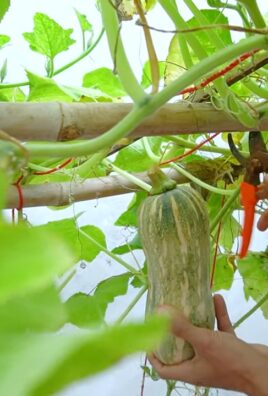
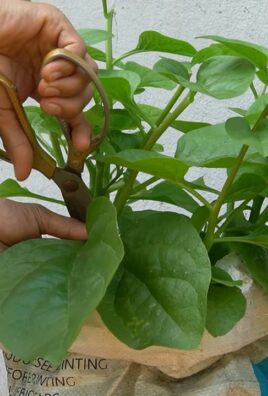
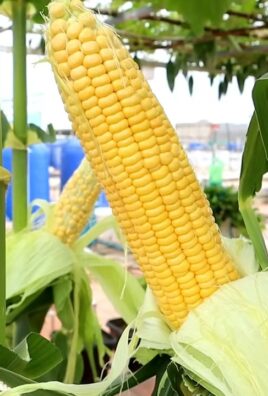
Leave a Comment